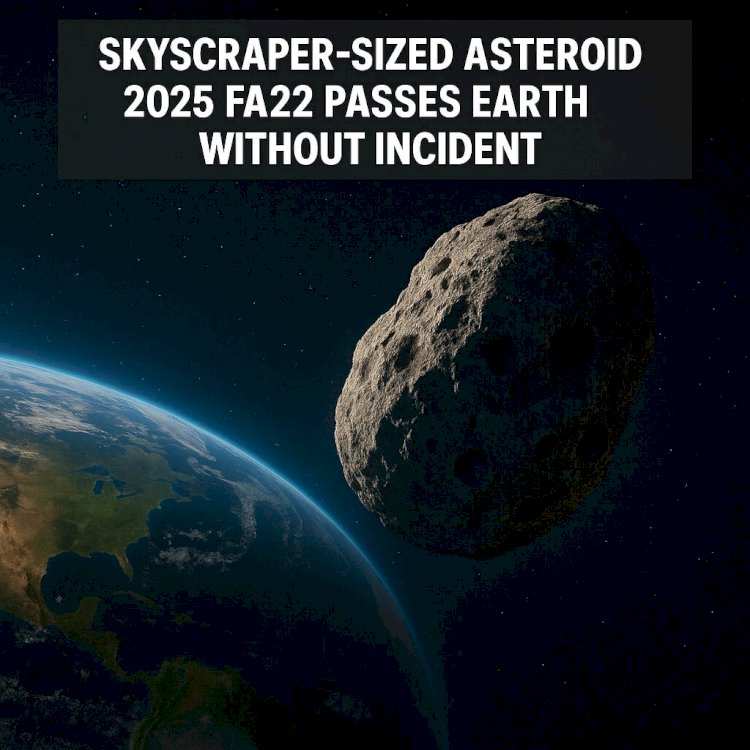Skyscraper-Sized Asteroid 2025 FA22 Passes Earth Without Incident

18 September 2025 — An asteroid large enough to rival a skyscraper swept past Earth today, offering astronomers a valuable research opportunity while reassuring the public that there was never any danger of a collision.
The Flyby
The asteroid, known as 2025 FA22, measured between 120 and 280 metres across. Travelling at more than 24,000 miles per hour, it made its closest approach at a distance of roughly 841,000 kilometres — about 2.2 times the span between Earth and the Moon.
Though the flyby was closer than many other asteroids of this size, scientists confirmed well in advance that the object posed no threat.
Discovery and Classification
First detected in March 2025 by the Pan-STARRS 2 observatory in Hawaii, 2025 FA22 briefly drew attention when initial calculations suggested a remote chance of impact late this century. Those predictions have since been revised, and astronomers say its orbit is now well understood, ruling out any near-term risk.
Because of its size and proximity, the asteroid is classed as a Potentially Hazardous Asteroid (PHA) — a technical label that identifies objects large enough and close enough to warrant careful monitoring, even if they are not currently dangerous.
Global Monitoring Effort
International teams of scientists used telescopes and radar stations across multiple continents to track the asteroid during its approach. This effort allowed researchers to refine estimates of its orbit, measure its surface features, and gather data that will feed into planetary defense studies.
The encounter also provided a practical test of early-warning systems and international cooperation on asteroid monitoring. Amateur stargazers, meanwhile, caught glimpses of the object through backyard telescopes and tuned in to livestreams of the event.
Why It Matters
Close approaches like that of 2025 FA22 are relatively common on a cosmic scale, but each one is an opportunity to improve preparedness for the rare event of a genuine threat. Studying asteroids of this size also helps scientists understand the composition of near-Earth objects and the dynamics of our solar system.
Looking further ahead, projections indicate another pass in 2173, when the asteroid will again come close enough to draw attention from researchers and the public alike.
The safe passage of 2025 FA22 highlights both the vigilance of the global astronomical community and the importance of continued monitoring of near-Earth objects. While Earth was never at risk this time, the data gathered ensures that humanity is better prepared for whatever the cosmos may bring in the future.

 content-team
content-team 


















